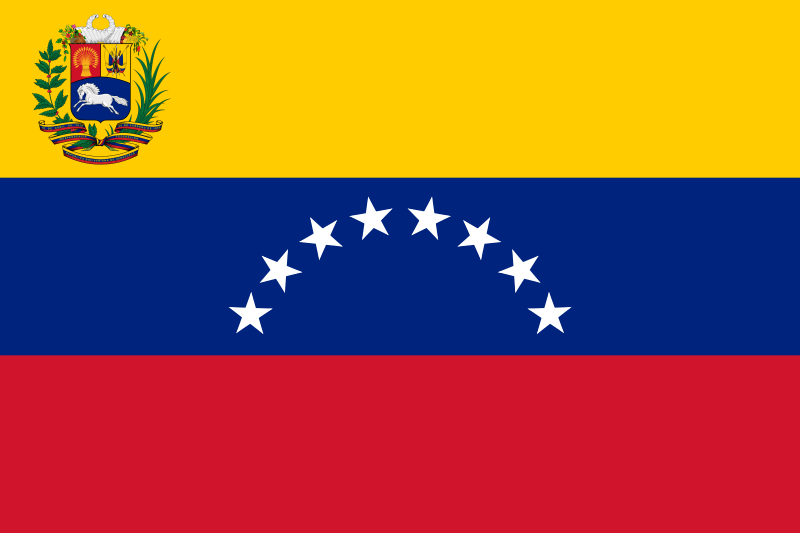 Venezuela (pronounced /ˌvɛnɨˈzweɪlə/ ; Spanish: [beneˈswela]), officially called the Bolivarian Republic of Venezuela (Spanish:República Bolivariana de Venezuela), is a tropical country on the northern coast of South America. It is a continental mainland with numerous islands located off its coastline in the Caribbean Sea. The republic is a former Spanish colony that won its independence in 1821.
Venezuela (pronounced /ˌvɛnɨˈzweɪlə/ ; Spanish: [beneˈswela]), officially called the Bolivarian Republic of Venezuela (Spanish:República Bolivariana de Venezuela), is a tropical country on the northern coast of South America. It is a continental mainland with numerous islands located off its coastline in the Caribbean Sea. The republic is a former Spanish colony that won its independence in 1821.
Venezuela borders Guyana to the east, Brazil to the south, and Colombia to the west. Trinidad and Tobago, Grenada, St. Lucia, Barbados, Curaçao, Bonaire, Aruba, Saint Vincent and the Grenadines and the Leeward Antilles lie just north, off the Venezuelan coast. Its size is 916,445 square kilometres (353,841 sq mi) with an estimated population of 26,414,816. Its capital is Caracas. The colors of the Venezuelan flag are yellow, blue and red, in that order: the yellow stands for land wealth, the blue for the sea and sky of the country, and the red for the blood shed by the heroes of independence.
Venezuela has territorial disputes with Guyana (formerly United Kingdom), largely concerning the Essequibo area, and with Colombia concerning the Gulf of Venezuela. In 1895, after years of diplomatic attempts to solve the border dispute, from Venezuela, the dispute over the Essequibo River border flared up, it was submitted to a “neutral” commission (composed of United Kingdom, United States and Russian representatives and without a direct Venezuelan representative), which in 1899 decided mostly against Venezuela’s claim. Venezuela is known widely for its petroleum industry, the environmental diversity of its territory, and its natural features. Venezuela is considered to be among the world’s 17 most biodiverse countries, featuring diverse wildlife in a variety of protected habitats.
Venezuela is among the most urbanized countries in Latin America; the vast majority of Venezuelans live in the cities of the north, especially in the capital Caracas which is also the largest city. Other major cities include Maracaibo, Valencia, Maracay, Barquisimeto, Merida, Barcelona–Puerto La Cruz and Ciudad Guayana.
Venezuela’s heritage, art, and culture have been heavily influenced by the Caribbean context. These elements extend to its historic buildings, architecture, art, landscape, boundaries, and monuments. Venezuelan culture has been shaped by indigenous, Spanish and African influences. Before this period, indigenous culture was expressed in art (petroglyphs), crafts, architecture (shabonos), and social organization. Aboriginal culture was subsequently assimilated by Spaniards; over the years, the hybrid culture had diversified by region.

Notes from Wikipedia








